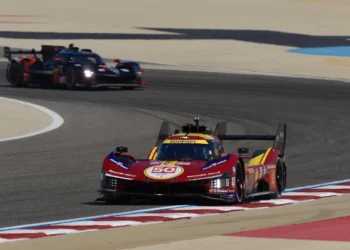In the opening race of the 2024 season, Max Verstappen’s dominant performance for the Abu Dhabi Autonomous Racing League, finishing 25 seconds ahead of the first non-Red Bull driver, seemed to suggest a one-sided season. However, the subsequent races have proven to be much more exciting, with Ferrari and McLaren securing victories and Mercedes coming close. With three different teams on pole in the last four races, the question arises whether the 2024 F1 season is now more competitive.
The Spanish Grand Prix may provide further evidence of this. Not only does it offer the chance to see if the trend of multiple teams on pole continues, but it also presents an opportunity to address some concerns regarding Red Bull and its main competitors. Although the RB20 looked strong when it debuted in February, the races in Monaco and Canada revealed weaknesses that make it vulnerable on certain types of tracks. The first major upgrade from Red Bull in Imola also faced scrutiny, with the technical director of Mercedes suggesting it could have been a step back.
Despite these concerns, Red Bull’s RB20 has proven to be fast enough to beat the updated W15 from Mercedes, and the team currently holds a healthy advantage in both the drivers’ and constructors’ championships. However, external factors such as safety car interventions and weather conditions have slightly distorted the overall picture. Sergio Perez’s recent difficulties have also added uncertainty to the constructors’ championship, with Verstappen’s lead in the drivers’ championship being more significant than Red Bull’s lead in the constructors’ championship.
As the season progresses, it will become clearer how much trouble Red Bull is in and how much their advantage has really been reduced. McLaren has shown impressive development over the past year, transforming from a team at risk of early elimination into one of Red Bull’s closest competitors. Ferrari had a strong start to the season but had a disastrous weekend in Montreal. However, it is believed to have been an isolated case, and the Spanish Grand Prix will provide a better assessment of Ferrari’s progress.
On the other hand, Mercedes surprised many with its strong performance in Montreal after a season of struggling as the fourth fastest team. Although false dawns have occurred in the past, there are reasons to believe that this breakthrough is more significant. Mercedes has made improvements to its front wing and floor profile, and more updates are expected in the upcoming races. While Barcelona does not provide definitive proof of Mercedes’ position, it may indicate that they are closing in on McLaren and Ferrari and have the potential to challenge Red Bull.
Overall, the upcoming weekend at the Spanish Grand Prix will be crucial in determining the true competitiveness of the teams at the front of the F1 grid.










